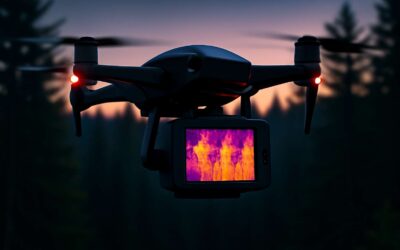
Drones are small, unmanned aerial vehicles that have a camera and can be remotely controlled. They can be used for a variety of purposes, including surveillance, filming, and commercial delivery.
Drones are also commonly used to conduct searches for people in dangerous locations. They can be a cost-effective alternative to a military attack, and their capabilities can improve the efficiency of search-and-rescue operations. However, the rapid adoption of drone technology has led to concerns over privacy. In some cases, they have also been used to conduct targeted attacks.
The first pilotless radio-controlled aircraft was developed in World War I, although it was not widely used until the Vietnam War. More modern models have also been developed, with enhanced endurance and the ability to maintain greater heights.
The most popular uses of drones are for surveillance and reconnaissance. They can be used to gather information and help predict the weather, and they can even be used to map local terrain. They are also available for recreational purposes. Many have built-in flight modes and stunt features, which allow them to perform various maneuvers. A few of them are also equipped with night vision optics.
While some drones can be bought through toy stores, there are a number of brick-and-mortar retailers as well. Popular e-commerce sellers include Amazon, Banggood, GearBest, and AliExpress.
Some of the more powerful drones are used for surveillance, crime prevention, and disaster relief. They can even be used to deliver critical health supplies to hospitals in developing countries.
The United States has been using drones for the past 20 years. The Biden administration has not yet established an official policy for the use of drones, and they are currently exploring the possibility of using foreign bases in the region for counterterrorism operations.
According to a PwC report, the budding market for drones is estimated to reach EUR10 billion a year by 2035. This will create business opportunities in areas such as transportation, agriculture, and infrastructures. It is also predicted that future generations of drones will be more autonomous and feature improved safety standards.
With the advent of autonomous drones, the size and range of these machines has increased. They can be able to fly well beyond visual line of sight, which can protect human workers in the event of a pandemic. Biological sensors can be incorporated into the drones, which can check the health of specific microorganisms and take air quality readings.
These drones are often used in the military, and they can be a great tool for delivering lifesaving supplies to victims of natural disasters. Their effectiveness could lead to improved victim survival rates.
Drones are also increasingly being used for specialized, professional applications. These types of drones can be used for search and rescue operations, electricity grid inspection tasks, and other complex tasks. They can also be used to monitor endangered species.
Drones are now increasingly being employed in commercial settings, and the commercial interest in this technology has grown exponentially over the past few years. Companies such as Alphabet’s Project Wing and Amazon are pursuing the use of drones for delivery services.


0 Comments